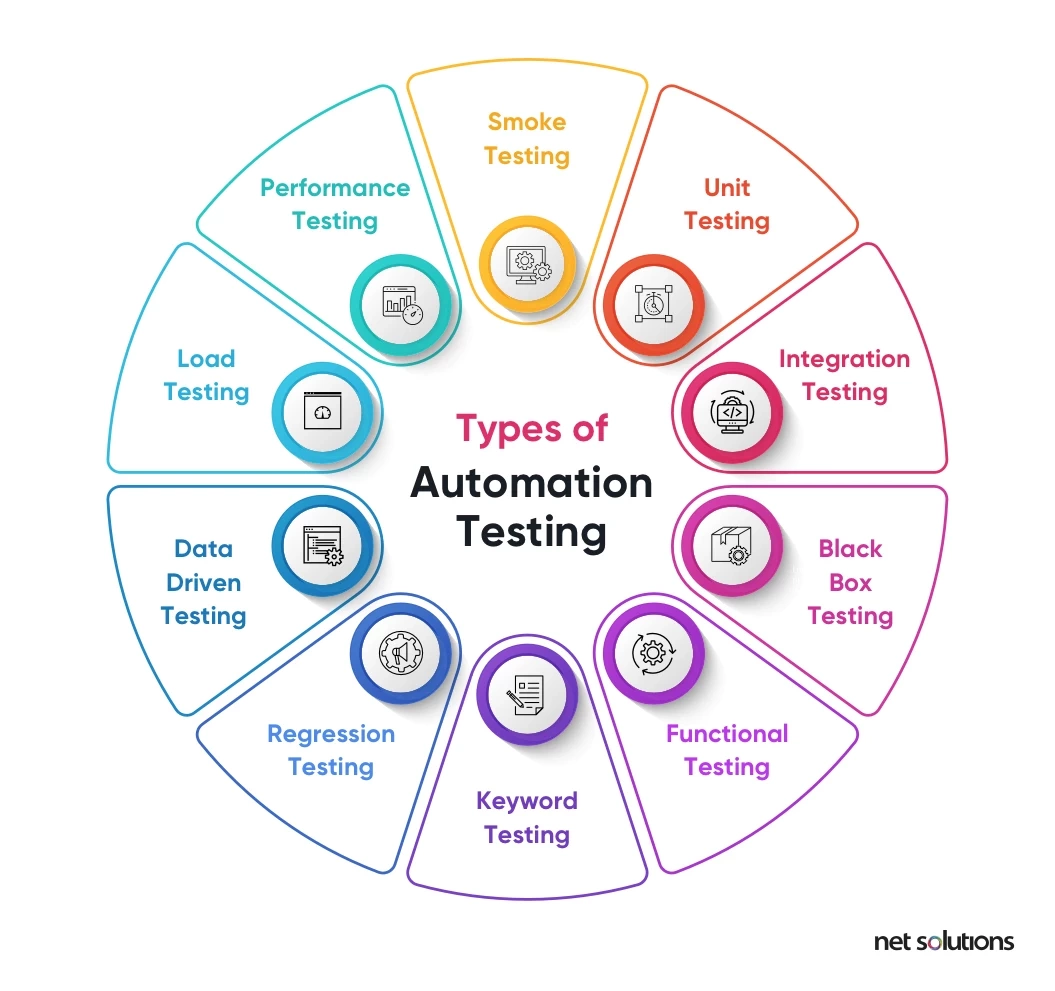Exploring the Future of Automation Testing in Software Program Advancement
Exploring the Future of Automation Testing in Software Program Advancement
Blog Article
From Handbook to Automated Testing: A Comprehensive Guide to Transitioning Smoothly and Successfully
In the realm of software testing, the change from manual to automated processes has become a progressively essential change for companies looking for to boost efficiency and precision in their testing methods. As innovation remains to advancement, the requirement for seamless and effective computerized screening methods has actually never ever been a lot more pressing. The trip from guidebook to automated screening is not without its obstacles, however when approached strategically and with a clear plan in mind, the benefits can be substantial - automation testing. In this comprehensive guide, we will certainly explore key actions and factors to consider vital for a successful shift, from the preliminary choice of tools to the assimilation of automation into existing process. Stay tuned to uncover the insights that will certainly help pave the method for a smoother and much more reliable screening procedure.
Benefits of Automated Testing
Automated screening offers many advantages, improving performance and accuracy in software program advancement procedures. One primary advantage is the considerable decrease in testing time. Automated tests can be run simultaneously on numerous gadgets and running systems, substantially accelerating the screening phase compared to hands-on screening. This enhanced performance enables faster responses on the quality of the software, making it possible for developers to determine and resolve issues without delay.
Furthermore, automated screening guarantees a higher level of precision in spotting problems. Given that automated examinations adhere to predefined manuscripts, human error is lessened, bring about more trustworthy examination results. Uniformity in screening is also boosted, as automated tests implement the very same actions precisely each time they are run. This consistency is essential in guaranteeing that all performances of the software application are extensively examined, reducing the possibility of unnoticed insects sliding with to production.
Choosing the Right Devices

First of all, examine your demands and goals. Understand the scope of your project, the innovations included, and the skill set of your team. This analysis will certainly aid you identify the abilities and features you require in your testing devices.
Second of all, take into consideration the compatibility of the devices with your existing procedures and systems. Smooth combination with your current software development lifecycle is important to guarantee a smooth transition to automation.
Additionally, review the scalability and adaptability of the devices. As your testing needs evolve, the tools need to have the ability to adapt and accommodate adjustments properly.
Last but not least, aspect in the support and community around the devices. When applying automated testing, robust assistance and an active user area can offer valuable sources and support. By thoroughly considering these elements, you can choose the right devices that line up with your requirements and established the stage for an effective transition to automated screening.
Creating Effective Examination Scripts

When crafting test manuscripts, it is crucial to think about the particular needs of the software application being tested and make certain that the scripts address all essential capabilities. Clear and detailed calling conventions for test manuscripts and test situations can enhance readability and maintainability. Furthermore, incorporating mistake handling mechanisms within the examination manuscripts can help in recognizing and dealing with concerns quickly.
In addition, organizing examination scripts into modular parts can enhance reusability and scalability, lowering redundancy and improving performance in examination script maintenance. click here for info Routine reviews and updates to check manuscripts are important to maintain rate with developing software application needs and functionalities. By complying with these concepts, testers can develop durable and effective examination manuscripts that add significantly to the success of automated testing processes.
Integrating Automation Into Workflows
Effective assimilation of automation devices right into existing workflows enhances and streamlines processes efficiency within software program growth cycles. When including automation right into operations, it is critical to identify repetitive tasks that can be automated to save time and decrease human error. By effortlessly incorporating automated testing tools like Selenium or Appium into the software application advancement lifecycle, teams can achieve faster feedback on code changes, resulting in quicker bug detection and resolution. This integration enables continuous testing throughout the advancement process, making sure that any type of problems are determined early, leading to higher software quality. Additionally, automation can be used to cause examinations instantly after each code dedicate, offering immediate recognition and maximizing testers to focus on more facility situations. Appropriate combination of automation tools requires cooperation in between advancement, testing, and operations groups to develop a unified process that optimizes performance and effectiveness in delivering premium software application products.
Ensuring a Smooth Shift
Efficiently transitioning to automated testing includes thorough planning and cautious implementation to reduce disturbances and make best use of performance in the software advancement procedure - automation testing. To make certain a smooth transition, it is vital to begin by conducting a complete assessment of the current testing procedures and identifying areas where automation can bring one of the most considerable benefits. Involving with all stakeholders beforehand in the process, including designers, testers, and task supervisors, is essential for gathering assistance and buy-in for the automation initiative
Interaction is crucial throughout this change stage. Clear communication of the goals, benefits, and expectations of automated screening helps to handle any type of resistance or problems that might arise. Furthermore, supplying ample training and sources for employee to upskill in automation devices and strategies is important for guaranteeing a successful transition.

Final Thought
To conclude, transitioning from handbook to automated screening uses numerous benefits, consisting of raised efficiency and reliability. By choosing the proper devices, creating reliable examination scripts, and integrating automation perfectly into process, organizations can guarantee a smooth and successful shift. It is vital to welcome automation as a beneficial property in software program screening procedures to boost total top quality and performance.
In the realm of software testing, the shift from manual to automated processes has become an increasingly important transition for organizations looking for to improve efficiency and accuracy in their testing practices. Automated examinations can be run simultaneously on multiple devices and operating systems, dramatically speeding up the screening phase compared to hand-operated screening. Uniformity in screening is likewise improved, click to find out more as automated tests execute the very same actions exactly each time they are run.To guarantee the successful anonymous execution of chosen testing tools, the creation of effective examination manuscripts plays a vital role in confirming the performance and performance of automated processes - automation testing. By complying with these principles, testers can develop efficient and robust examination scripts that add dramatically to the success of automated screening processes
Report this page